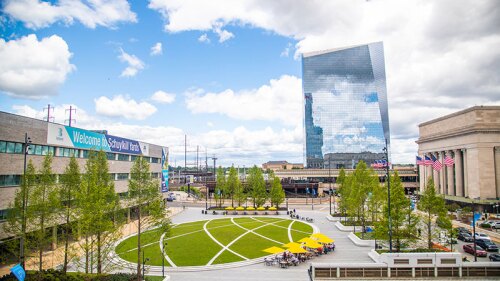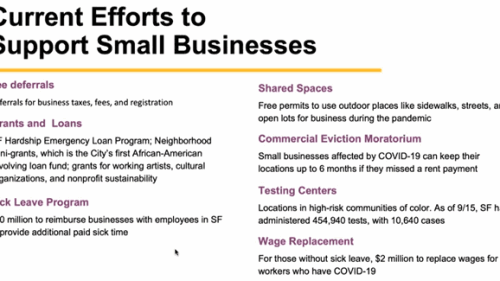
Top left, in clockwise order: Moderator Yu-Ning Hwang, chief planner and deputy chief executive officer, Urban Redevelopment Authority of Singapore; Desmond Sim, head of research for Singapore and Southeast Asia, CBRE; Tim Stonor, an architect and urban planner with consultancy Space Syntax; and Danny Poljak, executive vice president, Brookfield Properties; lead a discussion in a ULI Asia Pacific webinar.
Office workers across the Asia Pacific region are returning to the office at varying paces, taking into consideration government directives and company policies. Though the permanent impact of remote working remains to be seen, landlords will need to innovate and adapt to a changed environment, said participants in ULI Asia Pacific’s latest FutuRE of Cities and Communities webinar, titled “Is Distance Back?”
Register now to get access to the full series.
The discussion was led by moderator Yu-Ning Hwang, chief planner and deputy chief executive officer, Urban Redevelopment Authority of Singapore; Danny Poljak, executive vice president, Brookfield Properties; Desmond Sim, head of research for Singapore and Southeast Asia, CBRE; and Tim Stonor, an architect and urban planner with consultancy Space Syntax.
Key takeaways of the discussion included the following:
- The office is not dead; vibrant physical spaces will remain in strong demand. Across the region, people are returning to the office: 90 percent of staff are back in Seoul and Shanghai, and return levels in other cities such as Perth, Australia, are above 50 percent and continue to make steady gains. A CBRE survey shows 38 percent of occupiers say offices in the future will remain as important as now or become more important, whereas 41 percent say the importance of the office will only decrease slightly. Less than 10 percent of those surveyed are considering leaving the central business district (CBD). For some, however, expansion or relocation plans are on hold, and 73 percent expect flexible office space to feature in their future strategy.
- The pandemic is accelerating structural changes. The upheaval of COVID-19 has accelerated many existing trends, among them the need for flexibility in leasing and the demand for healthier workspaces. Landlords are already working to address some of these structural changes, such as with enhanced cleaning and by providing a more touch-free environment. Also, indoor environment air quality ratings and the concept of healthy buildings are now at the fore. However, while the need for distancing is not expected to continue long term, the decade-long trend toward office space densification likely will be reversed.
- Innovation is needed to fuel the interaction machine. Though the purpose of the office space is being reexamined, it will remain a central place to innovate and collaborate. If quiet work can be done at home or near home, the corporate office space can be better used as a place for that innovation and collaboration. Successful office spaces are interaction machines and fundamentally social spaces that support productive, collaborative work and serve as places for encounters. They are spaces where young people learn, mentoring takes places, careers are built, and cultures are formed. Landlords need to innovate in order to support tenants in the creation of dynamic spaces, and potentially even corridors and stairwells can be reimagined as spaces to support interaction.
- Flexible spaces are needed for flexible workers. Demand for flexible office space is not going away, and landlords are poised to become bigger players in this niche through their own offerings or in partnership with operators. Flex space will become part of the building’s ecosystem, allowing landlords to package space for their tenants rather than just handing them over to a third-party space provider. Offices may become more like hotels, with branded space and more services to make it attractive.
- Suburbs may become the new CBDs. Some people are seeing the benefits of the office without the commute, which is raising the possibility of “spokes” emerging closer to people’s homes. If people working at home will not commute to CBDs, some think flexible suburban office spaces, perhaps using underused retail space, may be a solution. At satellite offices or spoke locations, the need will still exist for a certain critical mass, good public transport, and a good mix of uses to make such a place attractive. There may also be a place for creation of local neighborhood centers at the heart of residential communities that are places for work. Akin to coworking spaces, these would be the near-home workplaces to serve those who find the home not conducive to work. However, others think spokes in the suburbs or neighborhood shopping centers will fail to attract or retain significant talent—at least not at a critical mass the way CBDs do, be they the downtown CBD or satellite CBDs. CBDs will continue to remain attractive to organizations as 24/7 vibrant live/work/play environments.
Members have access to more webinars from around the globe in ULI Knowledge Finder.


